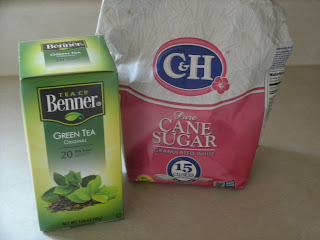Solomon Islands
I have 2 places left to visit. The Solomon Islands, and Kiribati. Yes, there were many countries that were left out, but these are the last 2 places where I found information about popular teas in the region. While I initially found kava tea at the top of the list, I also found a popular brand of tea with more traditional teas and flavors. I was intrigued to see that pu erh was at the top of the list.
Pu erh tea is a "newer" style of tea dating from the Ming dynasty (1368-1644). This type of tea became very popular in the early 2000s causing a sales boom. Since this time, the market has stabilized. Pu erh is made in 4 tea growing regions in southern China in a region close to Thailand, Laos, Vietnam, and Myanmar. There are 2 different ways of making pu erh tea. Both processes start with pan frying to inactivate enzymes, and sun drying to make a loose raw tea. These loose leaves can be compressed, and aged by storing for "raw" pu erh tea. The alternate method takes the loose leaves, ferments them by mold, and the loose ripe tea can be compressed into cakes for sale. From what I have read, the second method of production was developed in the 1970s.
At this point, I think it's pretty well established that I like ginger pu erh the best. All of the pu erh teas I have tried are the loose leaf styles. I've never purchased a cake. My favorite tea shop sells a pu erh cake that costs $41. There are also several styles where the leaves are shaped into a small bowl. I have not tried any of those yet, and I will admit I'm a bit hesitant to try the one called camel's breath.
Pe erh also has a distinct color, it's the darkest of the different styles of tea. While one would think black tea was the darkest tea based on name, pu erh has a darker, more chocolate brown appearance.
 |
| Pu erh |
 |
| Black tea |
It's a subtle difference, especially since I don't have pictures of them in the same cup.
Now for something about the Solomon Islands. This country consists of 8 large islands/island groups in 2 parallel chains located about 1000 miles northeast of Australia. The islands are volcanic, mountainous, and nearly 90% forest. While English is the official language, approximately 90 local languages are spoken. The population largely survives on subsistence agriculture, and traditional handicrafts are generally made for the tourist market.




Camel's breath does sound pretty dicey.
ReplyDeleteNow I'm trying to decide if there is any animal breath that would be pleasant. I'm not coming up with anything.
Delete